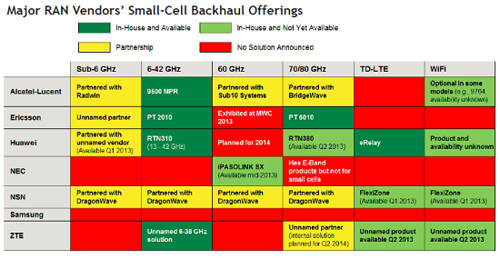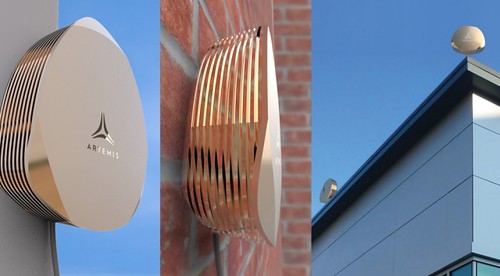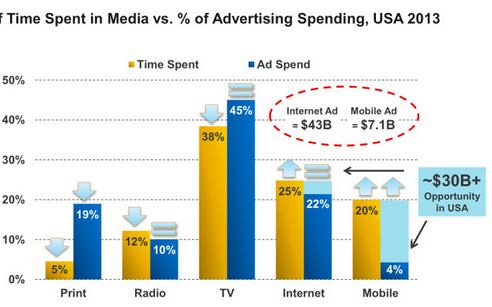It’s tempting to think that Sprint or Dish could use rooftops as a basestation platform for urban small cells. But is it practical? I have no clue.
Wireless backhaul is currently running $10K a link while a small cell basestation unit can run another $10K or more. Multiply $20K by 1 million homes. That’s a lot of money to provide service to small, low density areas. Reduce the price from $20B to $2B and it might make sense.
Traffic growth and spectrum exhaustion will necessitate the further rollout of small cell networks. In this video, DragonWave discusses the key elements for successful small cell deployments.
 nTelos, which has a partnership with Sprint, used Exalt ExploreAir radios for backhaul, among others. ExploreAir all-outdoor radios, are currently available in the ANSI/FCC 6, 11, 18 and 23 GHz bands, the 28, 29 and 31 GHz LMDS bands and the ITU/ETSI 11, 13, 15, 18, 23 38 and 42 GHz bands. They run about $10K a link.
nTelos, which has a partnership with Sprint, used Exalt ExploreAir radios for backhaul, among others. ExploreAir all-outdoor radios, are currently available in the ANSI/FCC 6, 11, 18 and 23 GHz bands, the 28, 29 and 31 GHz LMDS bands and the ITU/ETSI 11, 13, 15, 18, 23 38 and 42 GHz bands. They run about $10K a link.
nTelos uses both Ericsson basestations and those from Alcatel-Lucent. nTelos will add 800 & 2500MHz to their current 1900MHz LTE platform, so Sprint customer may roam with “The Full Monty” of connectivity in nTelos territory.
China Mobile wants to put the basestation in a datacenter. They communicate with small cell using fiber. Google, Facebook, Amazon and Microsoft could get on that train.
If the price is right.
Artemis is using spectrum controlled by Dish Network to conduct wireless tests in the San Francisco Bay Area using its innovative P-Cell technology. Maybe that’s the ticket.
Dish and Sprint have the spectrum. Google, Facebook (and Amazon) have the ad revenue. Mobile and desktop ads bring in about $50B/yr in the United States, with Google getting almost half of that.
LTE using Voice over LTE and rooftop small cells could be the answer for disruptive pricing, say $10-$20/month. More eyeballs = more money. For roaming, a greenfield wireless operator may also need a cool $12 Billion for 10 x 10 MHz at 600 MHz.
Will rooftop small cells work? Are they cost/effective? It seems like a crap shoot. But blowing up the legacy phone network might be fun — and make good business sense.
Related Dailywireless articles include; Ruckus Announces Carrier-Grade WiFi Management, Dish to Launch Commercial Fixed Wireless in July?, What’s inside Google’s Fiber Huts?, Google Fiber Going Wireless?, Intel: Basestation in the Cloud, Google Fiber Expands to More Cities, Google Fiber Launches in Kansas City , FCC Authorizes High Power at 5.15 – 5.25 GHz, Ad-Sponsored WiFi Initiatives from Gowex & Facebook, Comcast Creates Hotspot 2.0 National Network, FCC Moves to Add 195 MHz to Unlicensed 5 GHz band
Posted on Thu, 29 May 2014 17:25:27 +0000 at http://www.dailywireless.org/2014/05/29/...practical/
Comments: http://www.dailywireless.org/2014/05/29/.../#comments



